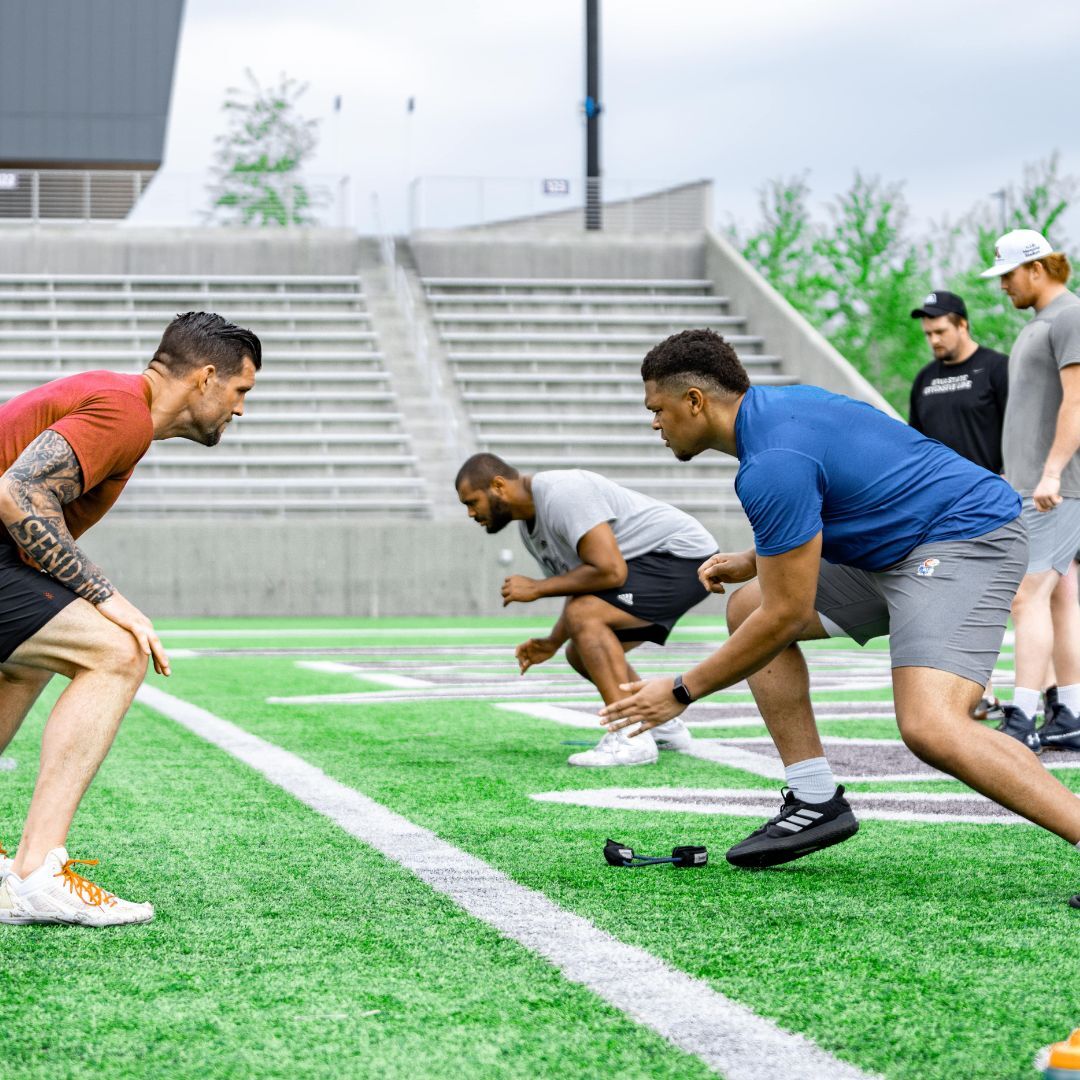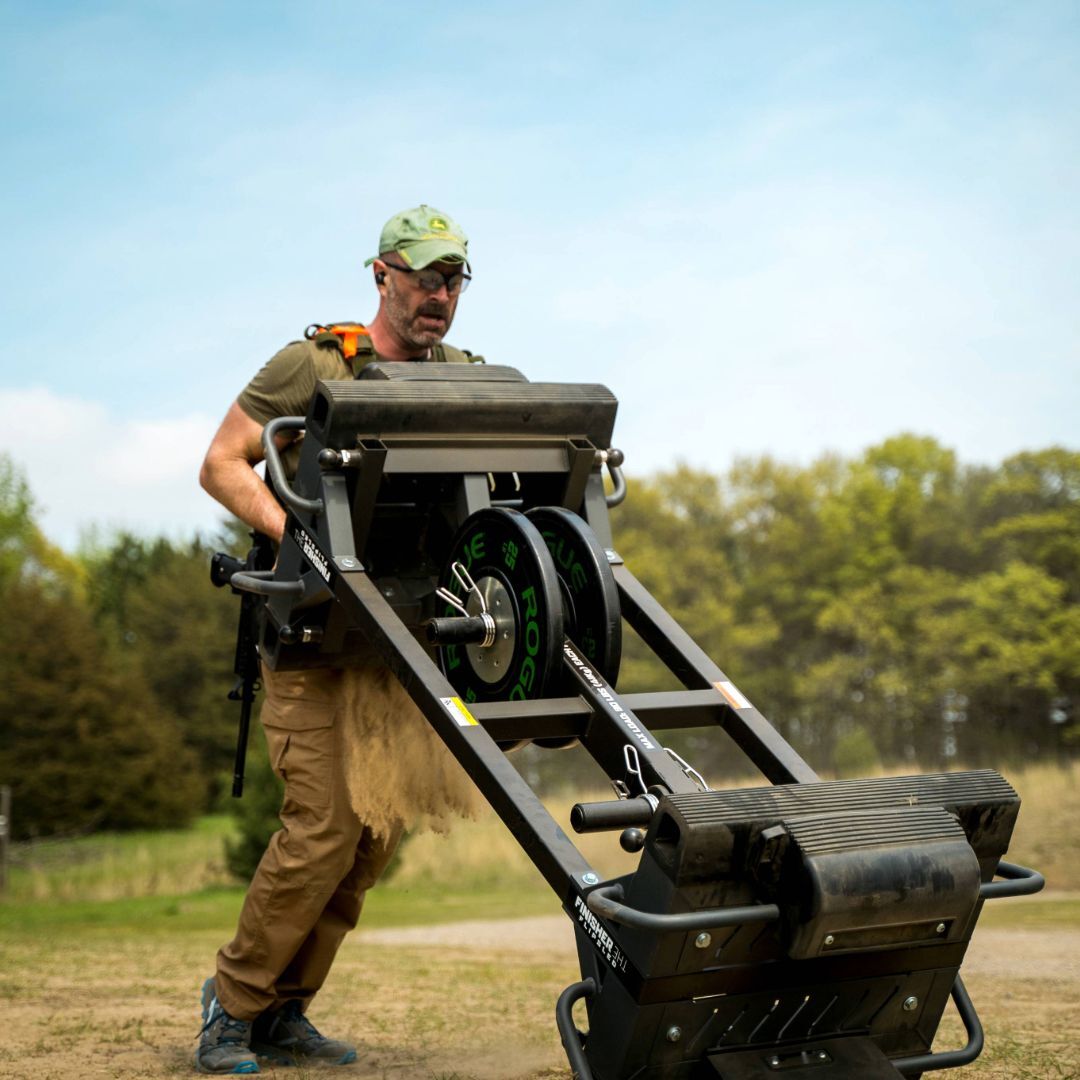Firefighting is one of the most physically demanding jobs on the planet. It requires a unique blend of strength, endurance, and raw power to handle unpredictable and life-threatening situations. From carrying heavy equipment up flights of stairs to forcing entry through a locked door, a firefighter must be physically ready for anything.
This level of readiness goes beyond traditional strength; it demands functional power and endurance. In this guide, we’ll explore firefighter fitness and the keys to developing maximum power to get the job done.
Fitness Components Every Firefighter Needs
Training to be a firefighter is not all about developing immense power. There are many facets of fitness training that firefighters must incorporate to perform well on the job, such as cardiovascular endurance and core stability.
Cardiovascular Endurance
Long operations, multiple calls, and intense physical exertion demand a robust and well-conditioned cardiovascular system. Firefighters face extended periods of high-intensity activity, from ascending multiple flights of stairs with heavy gear to operating in extreme heat.
Firefighters must be able to sustain their energy throughout a demanding shift without succumbing to fatigue through intense endurance training. A strong cardiovascular system supports physical performance and enhances recovery, allowing firefighters to return to readiness more quickly after strenuous tasks.
Muscular Strength
Firefighters must also have the necessary muscular strength to handle the daily rigors of the job. Muscular strength is the force-producing capacity firefighters need to lift, carry, pull, and push heavy loads, whether it’s equipment, debris, or people during rescue operations.
From forcing open doors to lifting injured individuals, every action on the fireground relies on a strong musculoskeletal system. Building muscular strength also helps protect joints and reduces the risk of overuse injuries, which are common in this physically demanding role.

Flexibility
Good flexibility and mobility are critical for moving efficiently in restrictive gear and navigating tight, confined spaces. Firefighters must be able to bend, twist, and reach in awkward positions while wearing heavy equipment that limits movement.
Flexibility allows for a full range of motion, which helps on-the-job performance and reduces the risk of strains, sprains, and other common injuries. Incorporating flexibility and mobility exercises into regular training can improve posture, reduce muscle tightness, and support long-term physical health.
Core Stability
A strong and stable core is the nexus of all functional movement, playing a central role in almost every action firefighters perform. The core acts as the bridge between the upper and lower body, transferring force and providing the balance needed for powerful, coordinated actions.
Whether lifting heavy equipment, climbing ladders, or maintaining stability on uneven terrain, a firefighter needs a strong core. Without it, power generation becomes inefficient, and the risk of back injuries and other musculoskeletal issues increases significantly.
Understanding Functional Power for Firefighters
Firefighters don’t just need raw power—they also need to develop functional strength. In the context of fitness, power is exerting maximum force in a short period of time. It's the explosive combination of strength and speed.
While pure strength—the ability to lift a heavy object—is important, functional power is what allows a firefighter to act quickly and decisively. For firefighters, this means the ability to swing an axe, hoist a ladder, or easily drag a victim to safety without straining their bodies. These actions aren't slow and controlled; they are explosive, dynamic movements that require immediate force.
How To Develop Functional and Tactical Power
Building elite-level power requires a targeted and intelligent training approach. Below are important keys to developing maximum power for firefighter fitness.

Compound Exercises
Focus your training on compound exercises. These multi-joint movements, such as squats, deadlifts, and overhead presses, engage multiple muscle groups simultaneously. They build a solid foundation of functional strength that directly translates to the dynamic tasks that fighting fires requires, like swinging axes, lifting heavy objects, and more.
Plyometrics
Plyometrics, or jump training, is a cornerstone of power development. Exercises like box jumps, broad jumps, and medicine ball throws train the muscles to exert maximum force in short intervals. This explosive training helps firefighters develop the rapid response capabilities they need on the job.
Olympic Lifts
The snatch and the clean-and-jerk lifts are excellent exercises for developing total-body power. These complex lifts teach the body to move as a single, coordinated unit, generating explosive force from the ground up. Mastering these movements will dramatically enhance your ability to produce power.
Interval Training
A unique aspect of firefighting is that intense physical exertion can happen at a moment’s notice, so firefighters must prepare their bodies for intense effort at any time. High-intensity interval training (HIIT) mirrors these demands. By alternating between all-out effort and short rest periods, you train your body's energy systems to recover quickly and perform under duress.
Functional Training
Firefighters should also incorporate exercises that simulate the specific tasks they perform on the job. Use tools like sledgehammers, sandbags, and heavy ropes to mimic real-world movements. This type of training builds job-specific strength and power, ensuring your fitness is directly applicable to the fireground.
Core Strengthening
A powerful core is a must for firefighters and should be a point of emphasis in their training. Move beyond basic crunches and incorporate exercises like planks, Russian twists, and anti-rotation movements. A strong, stable core helps firefighters transfer power efficiently and protect their spine from injury.
Grip Strength
A unique aspect of training that firefighters should focus on is their grip strength. Your ability to handle hoses, tools, and ladders depends on your grip. Incorporate farmer's walks, plate pinches, and dead hangs to build crushing grip strength that won't fail when it matters most.
Recovery and Nutrition
Intense training breaks the body down; recovery builds it back stronger. Prioritize adequate sleep, proper hydration, and a balanced diet that’s rich in protein and complex carbohydrates. This is the fuel that powers your performance and repairs your body for the next challenge.
Tools and Equipment for Firefighter Fitness
Building maximum power requires the right tools. While bodyweight exercises are effective, incorporating specific equipment can accelerate your progress and provide a more comprehensive workout. Free weights like barbells, dumbbells, and kettlebells are fundamental for building foundational strength through compound lifts, while resistance bands offer a versatile way to add resistance and work on mobility.
Advanced functional training equipment like the FlipSled helps firefighters develop the strength they need to work on the job and work together while training. The FlipSled is a multi-functional tool that allows for flipping, pushing, dragging, and carrying, simulating the raw, explosive movements required in firefighting. Its military-grade durability can withstand the most intense training sessions and is an all-in-one solution for building the functional power tactical professionals demand.
Forging a Resilient Firefighter
Developing maximum power is not just about being strong; it's about being effective, efficient, and resilient in the face of danger. By focusing on a holistic fitness program that incorporates these eight keys, you can build a body that is ready for the rigors of the job.
Contact our team today to elevate your fire department's functional strength training with the FlipSled. We’ll outfit your team with the same equipment that organizations like the US National Guard, US Marine Corps, and US Army Rangers trust to prepare their fighters for the rigors of their job.
You May Also Like
These Related Stories

How To Develop a Powerful First Step for Linemen

How To Train for Explosive Moments in the Field
.png)
.png?width=2004&height=239&name=FlipSled%20Logo%20HRZ%20WHITE%20(1).png)
